Pallet Changing Machine: What’s the Best Way to Swap Wet Paper Pallets?
Having a load of valuable paper products ruined because of a simple pallet issue is a problem I've seen many times. The pallet gets wet from a spill on the floor, damaged by a forklift, or it's simply the wrong type for your customer or your automated warehouse. Trying to swap it manually is slow, dangerous for your team, and often leads to the paper stack tearing, shifting, or collapsing. This is especially true for wet paper, which loses its structural integrity and becomes incredibly fragile. Every minute your team spends carefully trying to fix this is a minute your production line is stopped, and every damaged roll is a direct hit to your profits.
The single best way to swap wet or fragile paper pallets is by using a pallet inverter or a pallet changing machine equipped with adjustable clamping pressure. These machines secure the entire load from the sides and top before rotating or pushing it to a new pallet. This controlled process ensures the unstable, wet paper stack remains compressed and intact, preventing any damage during the transfer.
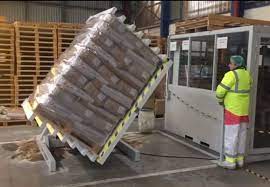
You know the right tool exists, but choosing the correct one is critical. This isn't just about swapping a pallet; it's about protecting your product, increasing your operational speed, and ensuring the safety of your employees. In this article, I'll use my years of experience as a packaging machine engineer to walk you through the specifics. We will look at how these machines handle delicate loads, compare the different types available, and analyze how they can transform your line's efficiency. Let's get into the details so you can make an informed decision.
How Can a Pallet Inverter Handle Delicate Paper Loads Without Damage?
You are considering investing in a pallet inverter, but a valid concern is stopping you. Can this powerful machine, designed to lift and rotate over a ton of product, handle your delicate paper rolls or sheets without turning them into scrap? One clamp set with too much force could crush the edges of a paper roll or leave permanent marks on a stack of finished sheets. The thought of entrusting a machine with such a sensitive task is daunting, and you need assurance that it will protect your valuable inventory, not destroy it.
A modern pallet inverter handles delicate paper loads safely by using finely-tuned, adjustable clamping systems, typically hydraulic or pneumatic. These systems allow an operator to preset the exact clamping pressure required for a specific load. This means you can apply just enough force to hold the paper stack securely without causing any compression, creasing, or damage. It's this precision that makes them perfectly safe for even the most sensitive products.
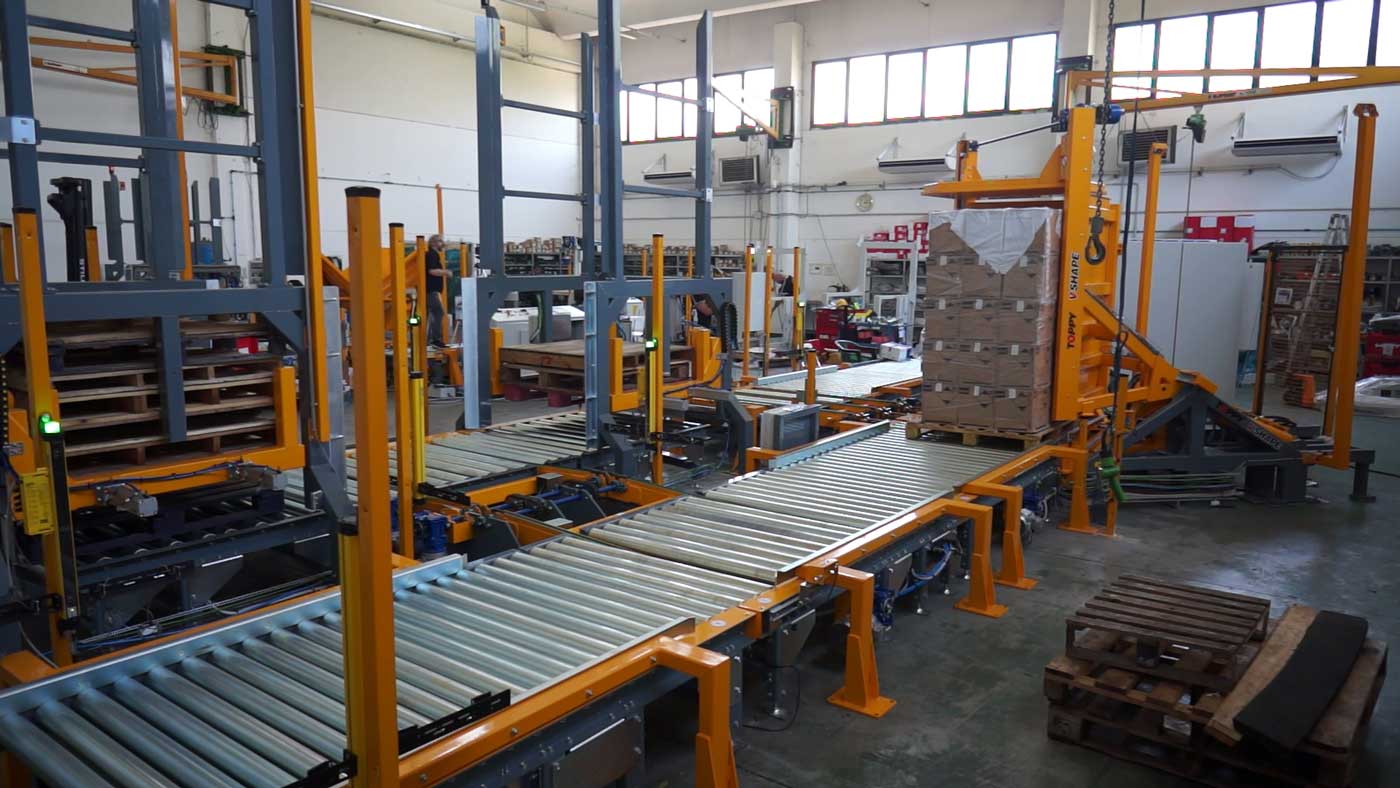
Precision in Pressure and Surface
The secret to a pallet inverter's gentle touch lies in two key areas: pressure control and surface materials.
First, let's talk about pressure control. Most high-quality pallet inverters feature a pressure regulation valve with a clear gauge. Before handling a new type of load, you can perform a simple test to find the sweet spot—the minimum pressure needed to hold the load securely during a full 180-degree rotation. Once you find this setting, you can lock it in. This ensures every pallet of that same product is handled with the exact same, pre-approved force. This removes guesswork and human error from the equation, providing consistent and safe handling every time. For a product like wet paper, where the stack is already compromised, this level of control is not just a feature; it is a necessity.
Second, the surfaces that actually touch your product are just as important. The clamping plates are not just bare steel. They are typically faced with materials designed to protect the load. Common options include:
- Hard Rubber Lining: This is a durable, non-slip surface that provides excellent grip without marking the product. It’s a great all-around choice for many paper products.
- Soft Polyurethane (PU) Pads: For extremely delicate surfaces, soft PU pads offer a cushioned grip that further distributes the clamping force, preventing any localized pressure points.
- "Soft-Touch" Features: Some advanced models have options for even more gentle handling, using sensor feedback to adjust pressure dynamically.
Inversion vs. Pushing: Which is Gentler?
When discussing pallet changers, there are two primary methods: inversion (rotating the load) and pushing (sliding the load). For delicate or unstable loads like wet paper, the inversion method is almost always superior.
- Pallet Inverter (180° Rotation): This machine clamps the load from the top and sides, then rotates it completely. The original pallet is removed, the new pallet is placed on top (which is now the bottom), and the machine rotates back. Throughout this entire process, the paper stack is held firmly in its original compressed state. Gravity works with the machine, keeping the layers from shifting.
- Pallet Changer (Pusher Type): This machine clamps the load from the sides and then a pusher plate slides the entire stack from the old pallet to a new one waiting beside it. While very fast, this horizontal movement can introduce shear forces between the layers of paper. For a wet, unstable stack, this could cause the layers to slide, skew, or tear.
The table below breaks down the key differences for handling delicate materials.
| Feature | Pallet Inverter (180° Rotation) | Pallet Changer (Pusher Type) |
|---|---|---|
| Handling Method | Clamps and rotates the entire load | Clamps sides and pushes the load horizontally |
| Load Stability | Very High. The stack is contained and compressed. | Moderate. Risk of layer shifting during push. |
| Suitability for Wet Paper | Excellent. Maintains stack integrity perfectly. | Risky. Can cause unstable layers to slide apart. |
| Damage Risk | Extremely low with proper pressure settings. | Low for stable loads, higher for unstable ones. |
| Operator Skill | Minimal skill needed once pressure is set. | Requires careful alignment of both pallets. |
For any factory owner dealing with sensitive materials, the control and stability offered by a pallet inverter make it the clear choice for protecting product integrity.
What are the Key Differences Between Stationary and Mobile Pallet Changers?
You've decided that a pallet changer is the right solution for your facility. But now you face another choice: do you get a large, stationary machine that bolts to the floor, or a smaller, mobile unit that you can drive around your warehouse? This is a crucial decision that directly impacts your workflow, efficiency, and return on investment. If you choose a stationary unit for a decentralized operation, you might create a new bottleneck by forcing forklifts to travel across the facility. On the other hand, if you choose a mobile unit for a high-volume production line, it might not keep up with the pace.
The fundamental difference is straightforward: a stationary pallet changer is designed for a fixed, high-throughput location, like the end of a production line, while a mobile pallet changer offers the flexibility to travel anywhere in a facility to swap pallets on demand. Your choice depends entirely on your specific operational needs, pallet volume, and facility layout.
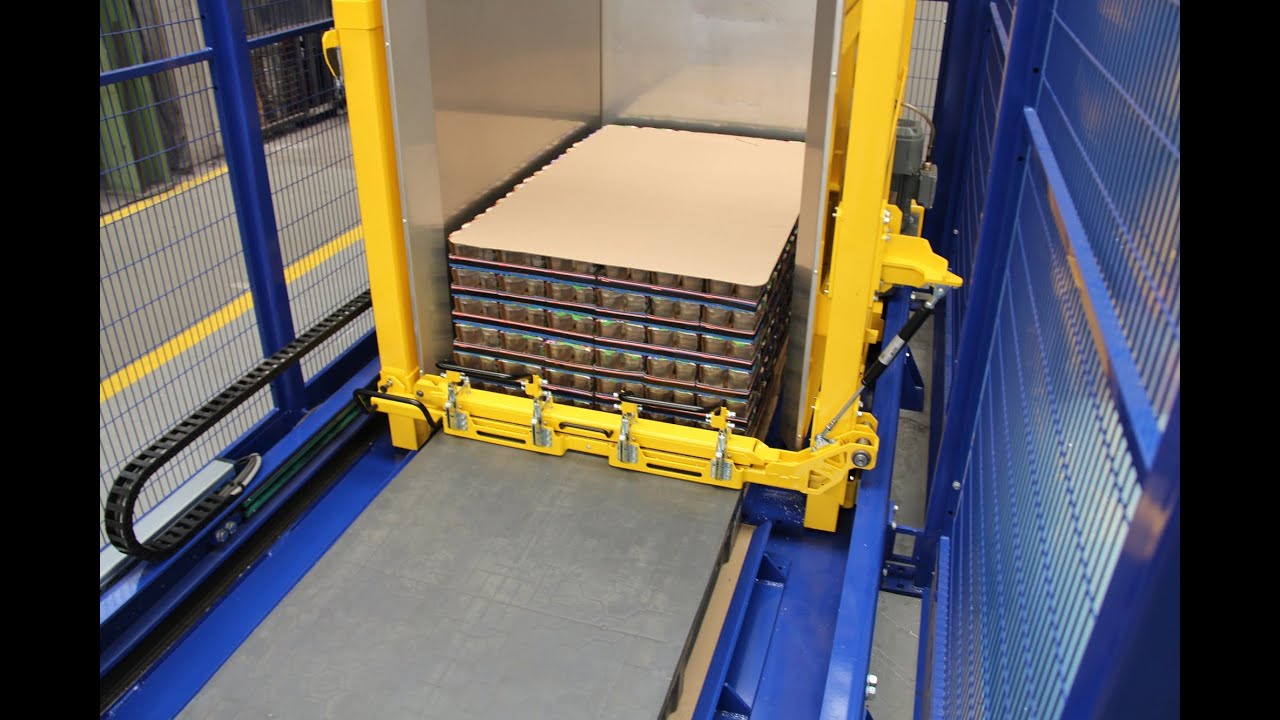
Dive Deeper: Matching the Machine to Your Workflow
Choosing between a stationary and a mobile unit is a strategic decision. Let's break down the factors you need to consider to make the right choice for your business.
The Stationary Pallet Changer: The High-Volume Workhorse
A stationary pallet changer is the heart of a centralized pallet swapping operation. These machines are robust, powerful, and built for speed and endurance.
- Best Use Case: They are ideal for the end of a production or packaging line where every single pallet needs to be changed. For example, switching from an internal wooden pallet to a plastic export pallet or a customer-specified one right before wrapping and shipping. They are also perfect for goods-in docks, where you need to transfer all incoming products onto your own standardized in-house pallets for storage in an automated storage and retrieval system (ASRS).
- Integration and Automation: This is where stationary models truly shine. They are designed to be integrated directly with roller or chain conveyors. A pallet can arrive automatically, be centered, swapped, and then sent on its way to the next station without any forklift intervention. This level of automation is critical for achieving goals like 95% capacity utilization, as it removes a manual, variable step from a high-speed process.
- Power and Capacity: Since they are powered by mains electricity and often use powerful hydraulic systems, they can handle very heavy loads (often 2000 kg or more) and have very fast cycle times, sometimes as low as 30-45 seconds.
The Mobile Pallet Changer: The Flexible Problem-Solver
A mobile pallet changer, often called a pallet inverter, looks and operates much like a powered pallet truck but with the added ability to clamp and rotate a load.
- Best Use Case: This machine is all about flexibility. Its purpose is to go to the problem, not the other way around. Is there a single broken pallet in the middle of a row of racking? The mobile unit can drive right up to it, extract the load, swap the pallet, and place it back. Did a pallet get damaged on a truck during unloading? The mobile unit can fix it right at the loading dock. It's also perfect for quality control checks or for picking single orders that need to be placed on a specific shipping pallet.
- Operational Flow: The mobile changer eliminates the need for a forklift to pick up a problematic pallet, transport it to a central changing station, wait for the swap, and then transport it back. This saves significant time, fuel, and labor for non-centralized tasks.
- Limitations: Being battery-powered, their throughput is lower than stationary models. They can typically handle 15-20 pallet swaps per hour, compared to 40-60 for a stationary unit. They also require an operator to drive them for each task.
A Comparison for Decision-Making
| Factor | Stationary Pallet Changer | Mobile Pallet Changer |
|---|---|---|
| Location | Fixed, bolted to the floor in one location. | Moves freely throughout the warehouse. |
| Throughput | High: 40-60 pallets per hour. | Lower: 15-20 pallets per hour. |
| Workflow | Centralized. Pallets must be brought to it. | Decentralized. Goes to where the pallet is. |
| Automation | Excellent. Easily integrates with conveyors. | Operator-driven. Not suitable for line automation. |
| Ideal for | End-of-line packaging, ASRS integration. | Random quality issues, order picking, warehouse maintenance. |
| Initial Cost | Generally higher, especially with integration. | Generally lower initial cost. |
Ultimately, the decision comes down to analyzing your pallet flow. If more than 80% of your pallet swaps happen at one or two predictable points, a stationary machine is your best investment. If your needs are random and spread across the facility, the flexibility of a mobile unit will serve you better.
How Does Integrating a Pallet Changer Impact Overall Line Efficiency?
As a factory owner, you are constantly evaluating every process, looking for bottlenecks. You might think that adding another machine into your production line will only complicate things and create another potential point of failure. It is a reasonable concern. An inefficient or poorly placed machine can disrupt the entire flow you have worked so hard to optimize. Manual pallet swapping, while slow, is a known quantity. You may fear that the promise of automation could be outweighed by the reality of new complexities and downtime.
However, integrating a pallet changer is not about adding an extra step; it is about eliminating a significant, often underestimated, source of delay, risk, and cost. It directly addresses the hidden inefficiencies of manual handling. A pallet changer transforms a slow, unpredictable, and unsafe manual task into a fast, consistent, and automated process, which has a ripple effect of positive impacts on your overall line efficiency and profitability.
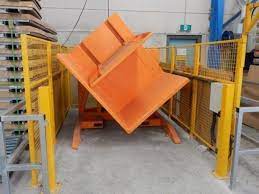
Dive Deeper: Quantifying the Efficiency Gains
The impact of a pallet changer goes far beyond simply swapping a pallet. It is a strategic investment that pays dividends in time, safety, and quality. Let's break down exactly how it boosts your overall efficiency.
1. Drastic Reduction in Cycle Time
This is the most direct and easily measured benefit.
- Manual Swapping: A typical manual pallet swap requires at least two workers. They need to de-stack the product by hand, move it to a new pallet, and then re-stack it. This process is slow, physically demanding, and can easily take 5 to 15 minutes per pallet, depending on the load's stability and weight.
- Machine Swapping: A stationary pallet inverter can complete a full cycle in about 60 seconds. A pusher-style changer can do it in as little as 30 seconds. This is a time reduction of over 90%.
For a facility like Javier's, aiming to increase capacity utilization to 95%, eliminating a 10-minute manual bottleneck at the end of the line is a massive step toward that goal. It ensures that the output of your high-speed production machinery is not being held up by a low-tech manual process.
2. Elimination of Product Damage and Waste
Manual handling is imprecise. When dealing with unstable loads like wet paper or sensitive products, the risk of damage is high. A dropped box, a torn bag, or a crushed corner can render a product unsellable.
- The Cost of Damage: This is a direct hit to your profit margin. You lose the cost of the raw materials, the energy and labor invested in its production, and potentially the goodwill of your customer.
- The Machine's Role: A pallet changer secures the load with precise pressure before it is ever moved. The entire stack is handled as a single, stable block. This controlled process virtually eliminates the risk of damage during the transfer. This directly supports the goal of reducing overall operating costs, as you are no longer losing money to preventable handling errors.
3. Enhanced Worker Safety and Ergonomics
Workplace safety is not just a regulatory requirement; it is a cornerstone of an efficient and well-run operation.
- The Risks of Manual Handling: Manually de-stacking and re-stacking heavy loads is a primary cause of musculoskeletal injuries, particularly to the back and shoulders. These injuries lead to lost workdays, increased insurance premiums, and lower employee morale.
- The Automated Solution: A pallet changer removes the need for any manual lifting. The operator's job is reduced to pushing buttons or pulling levers, a far safer and less physically demanding task. This leads to a safer workplace, fewer injuries, and a more productive workforce.
4. Enabling Full Automation and Digital Transformation
For a forward-thinking owner like Javier, who aims to deploy MES and IoT systems, a stationary pallet changer is a key enabling technology.
- The Bridge to Logistics: An integrated pallet changer acts as the bridge between your production data and your physical logistics. Your Manufacturing Execution System (MES) can send a signal to the changer indicating that the next pallet load is destined for a customer who requires a plastic pallet. The changer automatically receives this instruction, positions the correct pallet type, and performs the swap without any human input. This is a crucial element in creating a fully "lights-out," automated production-to-warehouse flow.
This integration of machinery and data is the very definition of a smart factory, turning a simple pallet swap into a data-driven, value-adding step in your process.
As an Engineer, Here's What I Tell Factory Owners Like Javier
Javier, when I read your profile, your journey from a hands-on manager to a factory owner resonated with me. It’s very similar to my own path in the packing machine industry. We both started on the factory floor and learned our businesses from the ground up. We understand that a machine isn't just a purchase; it's an investment in stability, predictability, and future growth. We don't just see steel and motors; we see a tool that can solve a problem and help our business, and our clients' businesses, succeed.
In your steel mill, you handle massive, heavy coils. You know that a moment of instability during a lift or transfer can be inefficient at best and catastrophic at worst. The core principle is the same for handling a pallet of wet paper. While it's not as heavy, its instability makes it just as challenging. The fundamental problem is identical: how to maintain the integrity of the load during handling. A pallet inverter solves this problem with engineering precision, treating a fragile load with the same stability it would a solid block of steel.
You mentioned that much of your equipment is over 15 years old. This is a situation I encounter all the time. Companies invest heavily in their core production machines—the furnace, the rolling mill, the press—but often neglect the end-of-line packaging and handling equipment. Yet, this is the final checkpoint where all the value you've created can be protected or lost. A pallet changer isn't an afterthought or a "nice-to-have." It is a critical piece of infrastructure that safeguards the quality and value of your entire production output. It ensures the product you worked so hard to make reaches your customer in perfect condition.
More importantly, you're looking for a strategic partner, not just a supplier. This is the most crucial mindset for any modern industrialist. A supplier sells you a machine from a catalog. A partner, which is what we at SHJLPACK strive to be, takes the time to understand your operation. A true partner asks the right questions: What is the exact moisture content of the paper? What are the dimensions and weight of the load? What is your required cycle time? What does your downstream automation look like? They help you analyze the trade-offs between an inverter and a pusher, a stationary and a mobile unit, to design a solution that fits your specific needs. This collaborative approach is the difference between simply buying a tool and implementing a powerful, long-term solution.
Your goals of reducing operating costs by 8% and increasing capacity utilization to 95% are exactly the kind of concrete targets that this technology addresses. By eliminating product damage, you directly lower costs. By automating a bottleneck, you directly increase utilization. By improving worker safety, you reduce hidden insurance and downtime costs. A pallet changing machine is a focused investment with a clear, measurable, and often rapid return on investment—exactly the kind of practical, high-impact solution that a pragmatic and forward-thinking owner like you can appreciate.
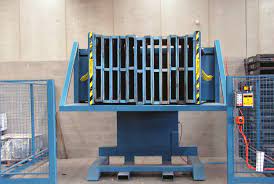
Conclusion
A pallet changing machine is the best way to swap wet paper pallets. It protects your product, improves line efficiency, and increases safety, making it a smart, strategic investment.

